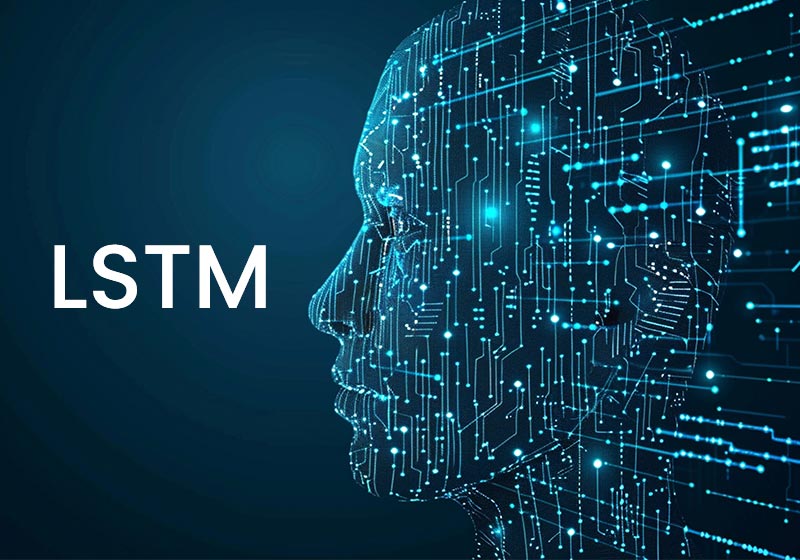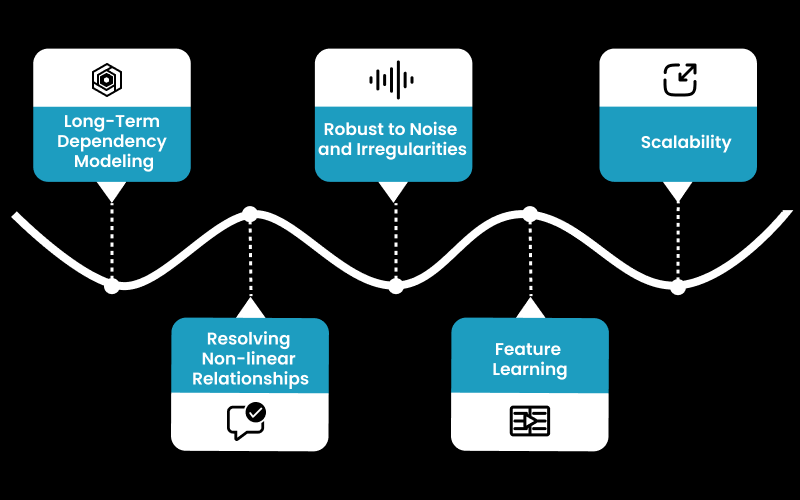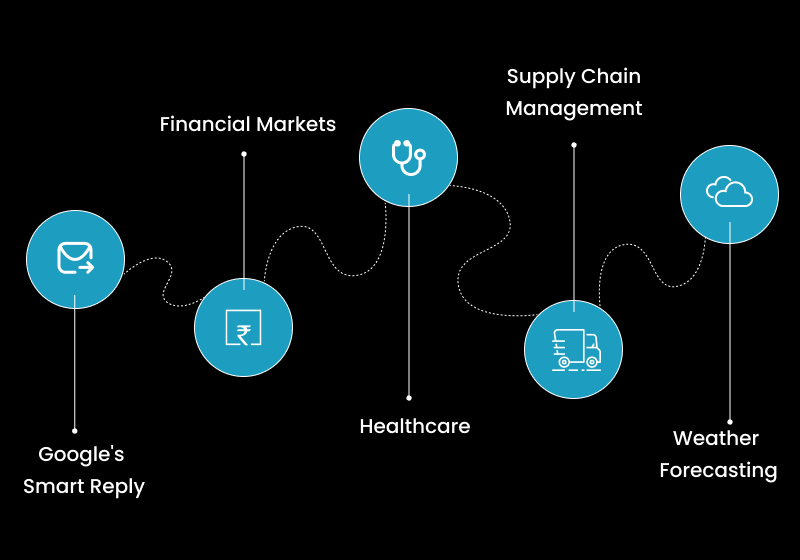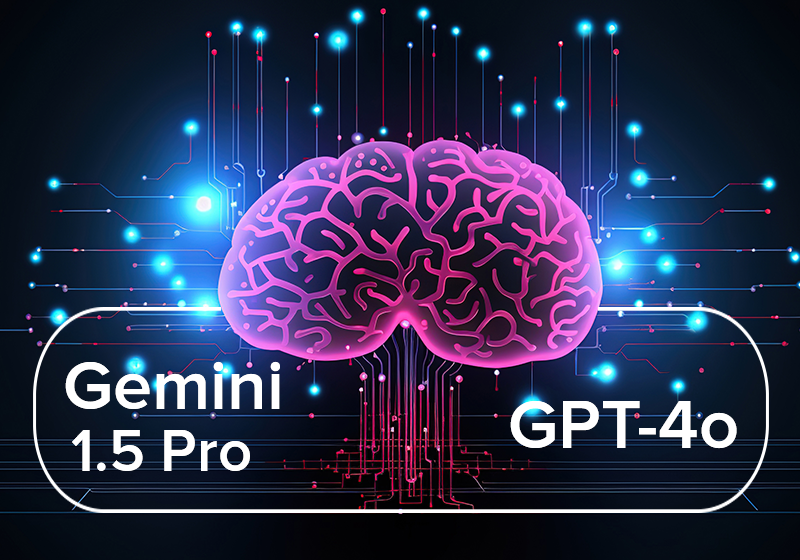AI
How LSTM Networks are Revolutionizing Time Series Forecasting
 Updated 06 Aug 2024
Updated 06 Aug 2024

In the realm of data science and AI Development Services, there’s always a push for more accurate and efficient models. Time series data—sequences of observations collected over regular intervals—pose unique challenges due to their temporal dependencies and complex patterns. Traditional forecasting methods often struggled with the complexities of sequential data, but LSTMs have emerged as a game-changer, transforming how we predict and analyze time-dependent phenomena.
LSTM networks, a unique type of recurrent neural network (RNN), have emerged as a powerful tool capable of learning and forecasting from time series data with remarkable accuracy and efficiency. LSTM can process full data sequences because of its ability to learn long-term sequences of observations. This makes LSTM a popular approach to time series forecasting.
Our dedicated data science team at Q3 Technologies generates demand data and converts it into forecast-quality information that can be utilized to train prediction models. Connect with us today to learn more about our AI Development Services.
Statistics and Facts:
- Improved Accuracy in Financial Forecasting: LSTM models have been shown to outperform traditional ARIMA models in stock price prediction by achieving a 20-30% lower mean absolute percentage error.
- Handling Large Datasets: In energy consumption forecasting, LSTM networks have demonstrated the ability to maintain consistent performance across varying dataset sizes, managing up to 150,000 data points efficiently.
- Resilience to Noise: Studies reveal that LSTMs are robust to noisy data, with a resilience rate of up to 80% in environments with significant Gaussian noise.
- Application in Smart Reply Systems: Google’s Smart Reply system, which predicts email responses, utilizes LSTM networks to achieve high accuracy, reducing the need for manual email sorting by 90%.
The growth and popularity of LSTM have generated a lot of discussion about best practices, methods, and more. Below, we will go over the basics of LSTM and how LSTM network architecture is revolutionizing time series forecasting.
The Challenge of Time Series Forecasting
Time series forecasting involves predicting future values based on previously observed values. This task is inherently challenging because of the temporal dependencies and patterns within the data. Traditional methods like ARIMA (AutoRegressive Integrated Moving Average) and exponential smoothing models have their limitations. They often fail to capture long-term dependencies and complex patterns in sequential data, especially when dealing with large datasets or non-linear relationships.
The need for a more advanced approach led to the development of machine learning models, with LSTM networks standing out due to their ability to handle these challenges effectively.
The Basics of LSTM Networks
LSTM, a type of recurrent neural network, can learn long-term dependencies in data sequences. They are frequently utilized for sequential data and have served as the basis for numerous successful predictive modeling implementations in time series analysis. The Attention mechanism, which was first created for natural language processing applications, enhances LSTM by allowing the model to concentrate on specific input sequence segments during prediction, much like human attention does.

The key components of an LSTM unit include:
- Cell State: At the heart of an LSTM unit lies its cell state, which acts as a conveyor belt running through the entire sequence of data.
- Forget Gate: Determines which data from the cell state should be deleted.
- Input Gate: Adds new data to the cell state update.
- Output Gate: Produces the output based on the modified cell state.
These gates allow LSTM networks to recall or forget information over time selectively. They are, therefore, highly suitable for collecting patterns in time series data, and activation functions like sigmoid and tanh govern them.
1. Long-Term Dependency Modeling
Unlike traditional RNNs that struggle with the vanishing gradient problem when sequences are long, LSTM networks excel in capturing dependencies that span across multiple time steps. LSTM networks are invaluable for forecasting tasks where past data has a significant influence on future outcomes.
2. Resolving Non-linear Relationships
Time series data often exhibit non-linear patterns and relationships that are challenging to capture with linear models or traditional statistical methods. With their ability to represent complex sequences, LSTMs are well-suited to recognizing and forecasting these sophisticated dynamics.
3. Robust to Noise and Irregularities
Time series data can be noisy or contain missing values, irregular sampling intervals, or outliers. LSTMs are resilient to such imperfections as they learn from the sequence of observations rather than relying on fixed time intervals, making them suitable for handling messy data encountered in practical applications.
4. Feature Learning
LSTMs eliminate the need for human feature engineering by automatically extracting pertinent features from raw data. This feature is beneficial when working with time series data with multiple dimensions.
5. Scalability
LSTM networks can effectively scale to analyze massive volumes of data because of developments in hardware and software frameworks like TensorFlow and PyTorch. This makes them appropriate for real-time forecasting applications.
Implementing LSTM Networks for Time Series Forecasting
To develop LSTM networks for time series forecasting, we must take a few steps:
- Data Preparation: First, we clean, normalize, and divide our time series data into training and testing sets.
- Feature Engineering: It is the next step, in which pertinent features are extracted from the time series data to aid in the learning of patterns and the production of precise predictions by the LSTM network.
- Model Training: Next, we employ the training data to train the LSTM network. This entails figuring out the network’s architecture, how many LSTM layers it has, and adjusting hyperparameters like batch size and learning rate.
- Model Evaluation: Using the testing data, we assess the LSTM network’s performance following training. To evaluate how accurate the predictions are, we can use measures like mean squared error (MSE) or root mean square error (RMSE).
- Forecasting: Finally, we can anticipate future events based on data that hasn’t been observed using the trained LSTM network. This enables us to project the time series’ future values.
Real-World Examples of LSTM Use Cases in Time Series Forecasting
The versatility of LSTM networks has led to their widespread adoption across various industries:

1. Google’s Smart Reply
Google’s Smart Reply in Gmail and other applications is powered by LSTM networks, which accurately predict responses based on conversation context.
2. Financial Markets
Accurate forecasting of exchange rates, stock prices, and economic indicators is essential in the financial markets. It has proven successful in using LSTM networks to forecast volatility and stock prices. LSTM in artificial intelligence can produce more accurate forecasts by utilizing past price data and other pertinent indications, assisting traders and investors in making well-informed decisions.
3. Healthcare
LSTM networks are employed in the medical field to forecast patient outcomes, the course of a disease, and the usage of hospital resources. Healthcare professionals can enhance patient care by implementing preventive measures and predicting the likelihood of patient readmission through the use of LSTMs in the analysis of electronic health records (EHRs).
4. Supply Chain Management
Precise demand forecasting is essential for efficient supply chain management. LSTM networks assist companies in lowering operating expenses, optimizing inventory levels, and forecasting product demand. LSTMs are able to produce more accurate demand estimates by examining past sales data, seasonal patterns, and outside variables.
5. Weather Forecasting
Weather forecasting involves analyzing complex meteorological data to predict future conditions. Weather forecasts, both short- and long-term, could become more accurate with the use of LSTM networks. LSTMs are capable of detecting patterns and trends that conventional models might overlook by analyzing massive databases of historical weather observations.
Challenges and Considerations
While LSTM networks provide tremendous benefits, a number of obstacles and considerations must be addressed:
- Computational Complexity: Training LSTM networks can be computationally demanding, especially for large datasets and complicated structures.
- Overfitting: Like other machine learning models, LSTMs can overfit if not adequately regularized or validated on new data.
- Interpretability: Understanding how LSTM networks make predictions can be difficult due to their inherent intricacy and black-box nature.
It takes both domain expertise and a balanced approach to model selection, hyperparameter tuning, and validation against baseline models to solve these issues.
Future Directions and Innovations
- Attention Mechanisms: By combining LSTM networks with attention mechanisms, models can perform better and be easier to understand by concentrating on pertinent segments of the input sequence.
- Ensemble approaches: Increasing prediction accuracy and robustness by combining several LSTM models or integrating them with other forecasting strategies.
- Explainable AI: Developing techniques to make LSTM-based forecasts more interpretable without compromising predictive performance, enhancing trust and usability in decision-making processes.
The field of LSTM-based time series forecasting continues to evolve with ongoing research and innovations:
As computational capabilities develop and data availability expands, LSTM networks will play an increasingly important role in improving the accuracy, dependability, and application of time series forecasting models across industries.
Conclusion
Despite challenges related to data quality, model interpretability, and computational resources, the potential of LSTM networks continues to grow with ongoing research and technological advancements. As we move forward, LSTM networks are poised to play an increasingly pivotal role in making accurate and reliable forecasts, driving better decision-making across industries.
Connect with us today to discover how our AI Development Services can elevate your business forecasting. Let’s turn your data into actionable insights and stay ahead of the curve!
Explore More

Gemini AI vs GPT 4o
Google I/O 2024 and OpenAI: Decoding the AI duel with Gemini AI and GPT 4o

Generative AI Services

